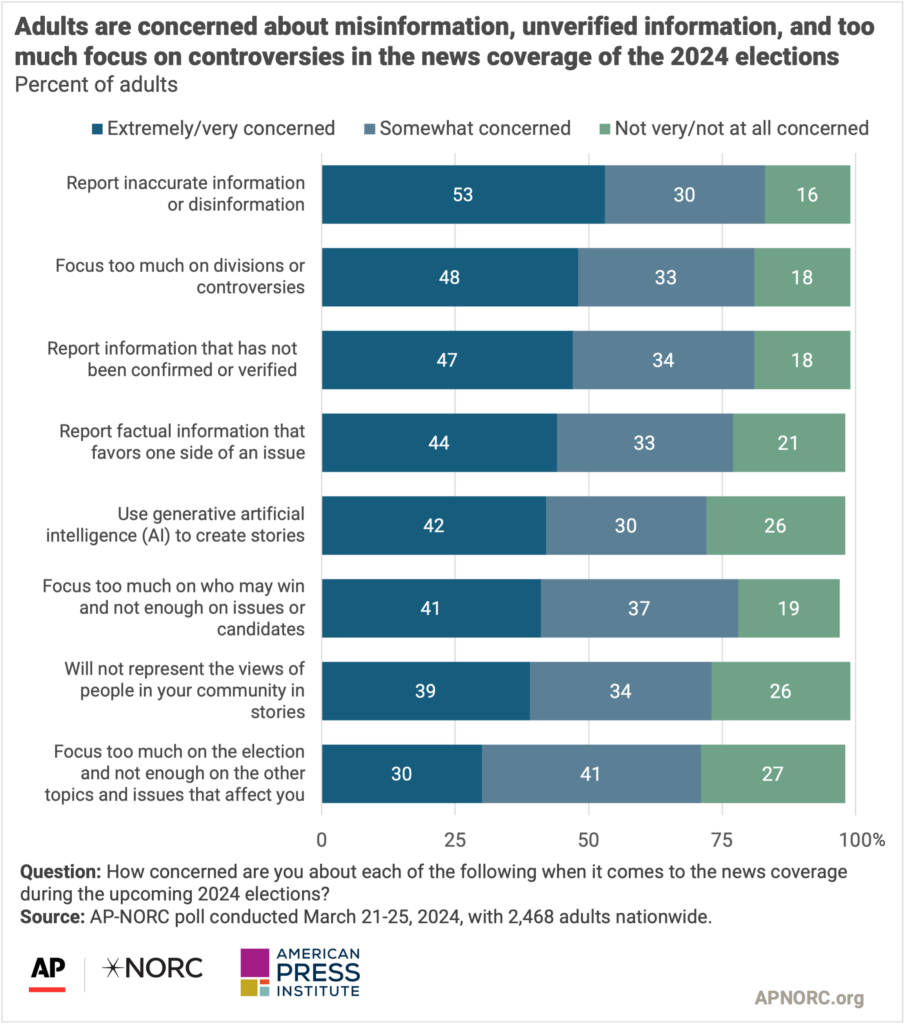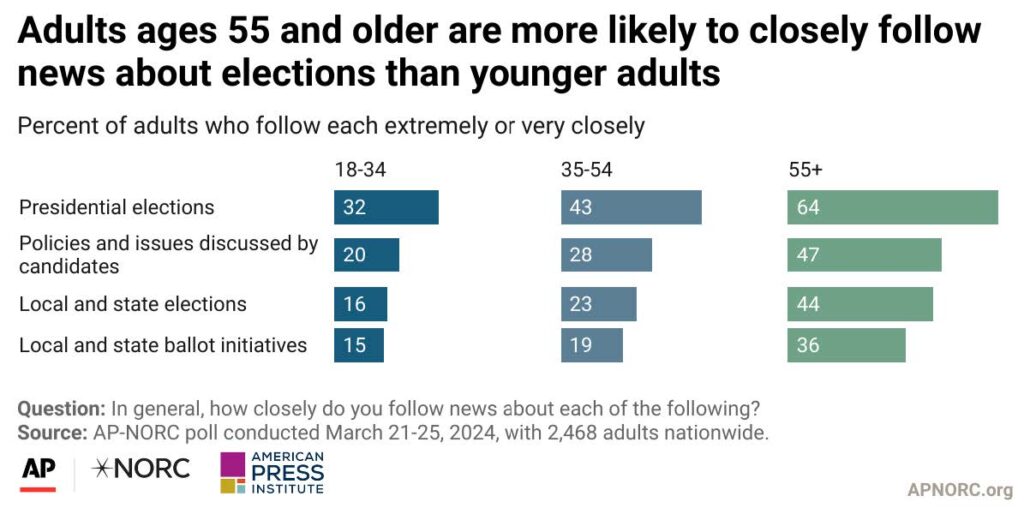The American Press Institute envisions an inclusive democracy and society, where communities have the news and information they need to make decisions and thrive.
Trustworthy election coverage is an important part of that vision. So when we looked at the latest research on how Americans view news about elections, we noted several findings local media especially may want to use to start conversations about how they gain trust this year with their community.
The research, which we conducted with the Associated Press-NORC Center for Public Affairs Research as part of our Media Insight Project, offers points of hope. Most adults follow news about presidential (78%) and local and state elections (64%) at least somewhat closely, and many report frequently receiving news about elections from national (50%) and local (39%) news outlets.
But the need to build relationships and prioritize community engagement is also evident. Although most adults regardless of age, partisanship, race or ethnicity tune into news about elections, only 14% express a great deal of confidence in election-related information they receive from national sources, and 11% say the same about local news media.
Here are some more specific points to consider as you evaluate how you build trust this year — plus resources and inspiration for getting started.
Americans express concern that news will be inaccurate and focus too much on controversies
Strategy: Show why you’re credible and be clear about the role you aim to serve in your community.
Our new survey asked about a range of concerns that might affect the public’s confidence in election coverage.
The reliability of the content rises to the top. About half of adults say they are extremely or very concerned about news organizations reporting inaccurate information (53%). Almost as many worry news outlets will report unverified information (47%). How constructive the reporting is ranks at about the same level: many are concerned that media will focus too much on divisions or controversies (48%).

Resources:
- Let a mission statement guide your work
- Use comments to explain and defend your work
- Explain your election coverage goals with an FAQ page
- Explain your story process to improve a user’s perceptions of your news organization
- How source tracking can help build trust with readers
Younger generations are less likely to follow news about local and state elections
Strategy: Local races affect all people deeply and daily. Take time to understand the views of and inform coverage by people who don’t already follow election news closely.
We also asked about the types of election news Americans follow, and explored that within different demographic groups.
In general, older adults follow more election news. And for local and state elections, it’s more than double the rate of 18- to 34-year-olds. For example, 44% of Americans ages 55 and older say they follow news about local and state elections extremely or very closely, compared to 16% of those ages 18 to 34.

Resources:
- How community listening can help shape election-year coverage
- Recommendations on leveraging age diversity to build a stronger democracy now
- Host a successful community listening session: Advice from API Inclusion Index leaders
- Try these community-centered election strategies from the Tennessean
- How The Tennessean’s opinion section is working to combat polarization
- How Gen Z and Millennials get information on essential topics
Black, Hispanic and Asian Americans place more trust than white adults in what they see on social media
Strategy: Have a plan for engaging on social platforms, and educating audiences how social media may be manipulated.
The survey also reveals some important differences based on other demographics, including people’s race and ethnicity.
One example of this is the confidence people put in different sources of information. This is true when you ask about where people put a “great deal” of confidence, or even where they put a moderate amount of confidence. Black, Hispanic and Asian American adults are more likely than white adults to put a great or moderate amount of confidence in election information they receive from social media (38%, 32% and 30% vs. 19%).

Resources:
- Key findings for reaching Black Millennials and Gen Z with news, with templates to engage on Instagram
- How the Florida Times-Union used Instagram to connect with a younger, more diverse audience
- Tips for local news marketing
- Four ways to engage news readers amid social platform flux
- Help your audience learn how misinformation proliferates
Civic Discourse and Democracy and Community Engagement and Trust are priority areas of focus for API. Follow our Need to Know newsletter this year for more resources and opportunities to strengthen local election coverage, including our joint webinar series with The Associated Press. If you’re a news leader, we also want to help you prioritize your workload. Here are some tips, and if you’re interested in more, bring us into your newsroom.
You might also be interested in:
We asked five leaders with community engagement experience outside of news about the opportunities they see for local media to build trust or belonging, from using physical spaces like libraries and community gardens to digital platforms that support shared experiences.
When we founded The 51st, we wanted to lead a news organization shaped by D.C. residents. And the Community Connector program has become an integral way of doing so.
From the outset, we knew we wanted to highlight art and help people connect with other residents who had a positive vision for Birmingham. Here are methods that helped us fill a historic theater for a fun and engaging evening.



